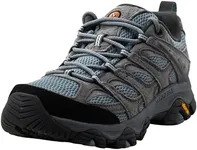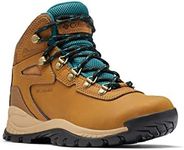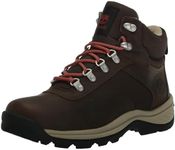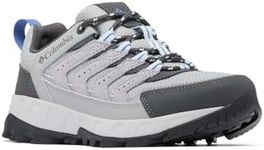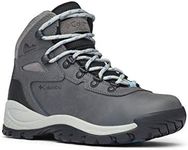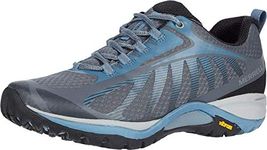Buying Guide for the Best Womens Wide Width Hiking Shoes
Choosing the right women's wide width hiking shoes is essential for comfort, support, and safety on the trails. The right pair will help prevent blisters, foot pain, and fatigue, especially if you have wider feet. When shopping, focus on how the shoes fit, the type of terrain you'll be hiking, and the level of support you need. Trying on shoes later in the day (when your feet are slightly swollen) and wearing your hiking socks can help you find the best fit. Remember, comfort and fit should always come first.WidthWidth refers to how much space there is across the shoe, especially in the toe box and midfoot. This is crucial for people with wider feet, as a shoe that's too narrow can cause discomfort, blisters, and even long-term foot problems. Wide width shoes are usually labeled as 'W' or 'Wide.' Some brands also offer 'Extra Wide' options. If your feet often feel cramped in regular shoes, or if you notice pressure points on the sides of your feet, a wide width is likely the best choice. Always try on shoes and walk around to ensure there's enough room without slipping.
Fit and SizingFit and sizing determine how well the shoe conforms to your foot's length and shape. A good fit means your toes have enough room to wiggle, your heel doesn't slip, and the shoe feels snug but not tight. Sizing can vary between brands, so always check size charts and, if possible, try shoes on before buying. If you plan to wear thick hiking socks, consider this when choosing your size. The right fit prevents blisters and keeps your feet comfortable on long hikes.
Support and CushioningSupport and cushioning refer to how well the shoe protects your feet from impact and keeps them stable. Good support helps prevent ankle rolls and foot fatigue, while cushioning absorbs shock from walking on rough terrain. Shoes with more support and cushioning are ideal for longer hikes or rough trails, while lighter, less cushioned shoes may be better for short, easy walks. Think about the type of hikes you do most often and choose a shoe that matches your needs.
TractionTraction is the grip the shoe's sole provides on different surfaces. Hiking shoes have special tread patterns to help you stay stable on dirt, rocks, mud, and wet ground. Deeper, more aggressive lugs are best for challenging, slippery, or uneven trails, while shallower treads work for well-maintained paths. Consider the terrain you hike most often and pick a shoe with the right level of traction to keep you safe.
Water ResistanceWater resistance means how well the shoe keeps your feet dry in wet conditions. Some hiking shoes are waterproof, using special membranes to block water, while others are just water-resistant or not treated at all. Waterproof shoes are great for rainy weather, stream crossings, or muddy trails, but they can be less breathable. If you mostly hike in dry conditions, a more breathable, non-waterproof shoe might be more comfortable. Match the water resistance level to the environments you expect to encounter.
WeightWeight refers to how heavy the shoes feel on your feet. Lighter shoes are easier to walk in and cause less fatigue, but may offer less protection and support. Heavier shoes are sturdier and more protective, which is helpful on rough or rocky trails. If you do a lot of long-distance or fast hiking, a lighter shoe might be best. For rugged terrain or if you carry a heavy backpack, a heavier, more supportive shoe could be a better choice.
BreathabilityBreathability is how well the shoe allows air to flow, helping to keep your feet cool and dry. Shoes with mesh panels or breathable fabrics are best for warm weather or if your feet tend to sweat. Less breathable shoes, like waterproof models, can get hot and damp inside. Think about the climate and your personal comfort—if you hike in hot weather, prioritize breathability.


